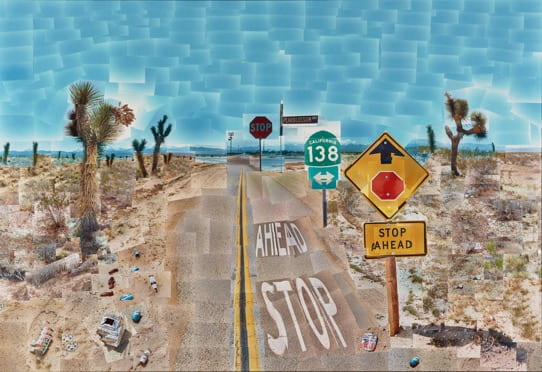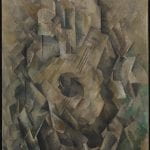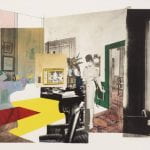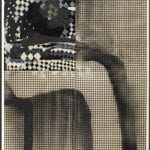Fragmented Scenes
‘If you don’t mind looking at the world from the point of view of a paralyzed Cyclops – for a split second. But that’s not what it’s like to live in the world’ (Hockney in , 2013)

This is an adaptable session which aims to introduce participants to the construction of abstract / alternative scenes and spaces using simple joiner techniques. It encourages in-depth independent research into David Hockney’s practice and its positioning within wider ideas regarding the nature of photographic representation. It encourages participants to consider issues of perspective, scale, point of view, time and motion.
‘I never thought the world looked like photographs, really. A lot of people think it does but it’s just one little way of seeing it’ (Hockney in Jones, 2004)
This Session could be run in conjunction with:

Aims & Outcomes:
- For participants to explore the construction of meaning in fragmented photographic representations.
- For participants to consider time, perspective, scale, point of view, composition and juxtapositions in the construction of photographic joiners.
- For participants to conduct in depth research on the work of David Hockney, his Cubist influences and apply these ideas to thier photographic practice.
- Participant Outcome: 1 final 12×16 digital print
Research: the work of david hockney
‘When is the present? When did the past end and the present occur, and when does the future start? Ordinary photography has one way of seeing only, which is fixed, as if there is kind of an objective reality, which simply cannot be. Picasso…knew that every time you look there’s something different. There is so much there but we´re not seeing it, that’s the problem’ (Hockney in Joyce, 1998, p.31)
You will Need:
- Digital cameras for all participants (and appropriate memory cards) *This session can also be run using Camera phones or Lumix cameras
- Card readers
- Access to computers (or laptops) and Photoshop / image editing software to make joiners
- Cardboard 6×4 ‘viewfinders’ (or ask participants to make them)
- An introductory brief & Presentation (above) for participants to outline the ideas and provide examples
- A booked room to critique participants work (either via a projector or via print)
- Blue tack to pin the work
- Costings and Risk Assessments
- Investigate the Tate resources for All About Cubism available here
- Make sure you are confident making joiners in Photoshop
preparation work:
- Ask participants to read Jonathan Jones (2004) ‘Disposable Cameras’ in The Guardian, 4th March 2004 available here
- Ask participants to read Martin Gayford (2012) ‘Inverview with David Hockney in The Telegraph, 14th February 2012 available here
- Ask participants to independently research the work of David Hockney
- Ask participants to watch the video David Hockney on What’s Unphotographable (2007) with Robert Hughes available here
- Ask participants if they have thier own digital cameras and cards
- Decide whether or not you wish participants to work in pairs / small groups to make thier joiners
- Make sure you have access to computers / image editing software
- Make sure there are enough team members to support participants (never assume thier prior knowledge)
- Decide whether you will project the work or print it.
- If you are printing it (12×16 per joiner) make sure the Photo Lab are aware and be aware of timekeeping so they have space to print the work.
- *If you are running this session off campus, make sure there is access to printers or projectors




























